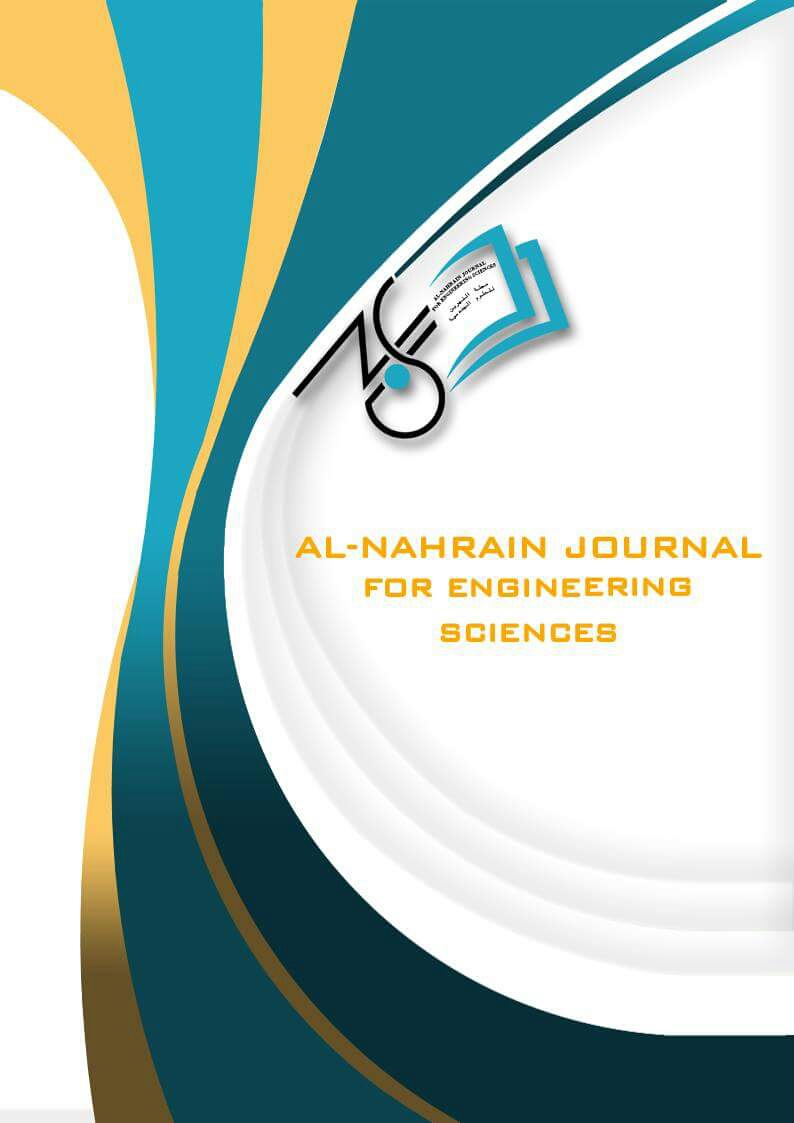Evaluation of Bonding Adhesion Strength and Failure Modes of Different Types of Cutback Asphalts
DOI:
https://doi.org/10.29194/NJES.27020149Keywords:
Pull-off Test, Tack Coat, Bonding Strength, Tensile Strength, Proceq DYNA Z16Abstract
A tack coat is a minimal coating of asphalt cement, cut-back asphalt, or asphalt emulsion to an existing pavement surface between layers to guarantee proper bonding between the two layers and longitudinal and transverse joints. Numerous researchers have assessed interlayer adhesion employing failure-mode behavior tests, such as pull-off, direct shear, and torsion testing. This study aims to quantify the best tensile resistance obtained using three types of cutback asphalt (RC70, RC800 modified with polymer 4.5% & MC70). All are applied on concrete surfaces at a rate of 0.5 L/m². The Proceq DYNA Z16 pull–off tester is used to measure the tensile strength at a rate of 0.25 kN/s. It is found that the average tensile strength of the tack coat materials is (0.319, 0.138, 0.028) MPa, respectively. It is concluded that RC70 has the maximum tensile strength. Also, the different types of solvent affect adhesion strengths; RC70 was Prepared using gasoline, while MC70 used petroleum. Gasoline has greater volatility and thus increased adhesion. Failure strength modes of interior bonding varied between cohesive failure adhesive and adhesive failure.
Downloads
References
Mohammad, L. N., Elseifi, M. A., Bae, A., Patel, N., Button, J., & Scherocman, J. A. (2012). Optimization of Tack Coat for HMA Placement, National Cooperative Highway Research Program (NCHRP) Report 712. Transportation Research Board, National Research Council, National Academies, Washington, DC.
Huang, Yang Hsien. Pavement analysis and design. Vol. 2. Upper Saddle River, NJ: Pearson Prentice Hall, 2004.
Shahin, M. Y., Blackmon, E. W., Van Dam, T., Kirchner, K. (1987). “Consequence of Layer Separation on Pavement Performance.” Report No. DOT/FAA/PM-86/48. Federal Aviation Administration, Washington, D.C.
King, G. and R. May. (2003). New Approaches to Tack Application, Presented at the 83rd Annual Meeting of the Transportation Research Board, Washington, D.C.
Wang, J., F. Xiao, Z. Chen, X. Li and S. Amirkhanian. (2017). Application of tack coat in pavement engineering. Construction and Building Materials, Vol. 152, pp. 856-871.
Biglari, M., Asgharzadeh, S. M., & Sharif Tehrani, S. (2019). Evaluation of factors affecting tack coat bond strength. Canadian Journal of Civil Engineering, 46(6), 270–277.
Stanzl, S. E., Tschegg, E. K., & Mayer, H. (1986). Lifetime measurements for random loading in the very high cycle fatigue range. International Journal of Fatigue, 8(4), 195–200.
Hakimzadeh, S., Kebede, N. A., Buttlar, W. G., Ahmed, S., & Exline, M. (2012). Development of fracture-energy based interface bond test for asphalt concrete. Road Materials and Pavement Design, 13(sup1), 76–87.
Tack Coat Materials and methods for optimaizing for thin HMA applications. (2011, May). Road Science, LCC..
Roffe, J.-C., & Chaignon, F. (2002). Characterization tests on bond coats: worldwide study, impact, tests, recommendations. proceedings of the 3rd international conference on bituminous mixtures and pavements, held thessaloniki, greece, november 2002., 1 (11) Tampanatu P.F. Sompie. Syanne Pangemanan (May 2018). Shear Strength of Tack Coat on Flexible Pavement and Composite Pavement. Journal of the Civil Engineering Forum Vol. 4 No. 2.
Hachiya, Y., Umeno, S., & Sato, K. (1997). Effect of tack coat on bonding characteristics at interface between asphalt concrete layers. Doboku Gakkai Ronbunshu, 1997(571), 199–209.
Wood, T. J., Janisch, D. W., & Gaillard, F. S. (2006). Minnesota seal coat handbook 2006.
Chen, D.-H. (2010). Slippage failure of a new hot-mix asphalt overlay. Journal of Performance of Constructed Facilities, 24(3), 258,264.
Cross, S. A., & Shrestha, P. P. (2005). Guidelines for using prime and tack coats. United States. Federal Highway Administration Central Federal Lands Highway
West, R. C., Zhang, J., & Moore, J. (2005). Evaluation of bond strength between pavement layers. Auburn University. National Center for Asphalt Technology
Raab, C., & Partl, M. N. (2009). Evaluation of interlayer shear bond devices for asphalt pavements. The Baltic Journal of Road and Bridge Engineering, 4(4), 186–195
Haftprüfgerät, Pull-off Tester, proceq DYNA Z16 manual.
Raab, C., & Partl, M. N. (2004). Effect of tack coats on interlayer shear bond of pavements. Proceedings of the 8th Conference on Asphalt Pavements for Southern Africa (CAPSA’04), 12, 16.
Talha, S.K., Abu, M.S., August 2019, Civil Engineering. Laboratory and Field Characterization of Micro-surfacing Mix Bond Strength.
Downloads
Published
Issue
Section
License
Copyright (c) 2024 Teeba Falih, Alaa H. Abed

This work is licensed under a Creative Commons Attribution-NonCommercial 4.0 International License.
The authors retain the copyright of their manuscript by submitting the work to this journal, and all open access articles are distributed under the terms of the Creative Commons Attribution-NonCommercial 4.0 International (CC-BY-NC 4.0), which permits use for any non-commercial purpose, distribution, and reproduction in any medium, provided that the original work is properly cited.













